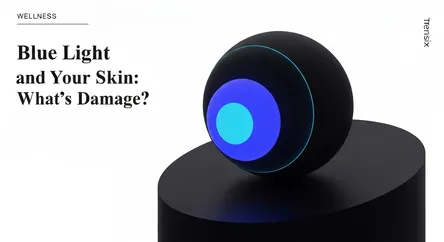Wellness
Blue Light and Your Skin: What's the Damage?

An explainer on how blue light from screens affects your skin, why it's a growing concern, and its potential to cause premature aging and pigmentation.
What is it?
Blue light, also known as High-Energy Visible (HEV) light, is a color in the visible light spectrum that can be seen by the human eye. Its primary source is the sun, but it is also emitted by digital screens, such as smartphones and computers, as well as LED lighting. Blue light has a short wavelength, which allows it to penetrate the skin more deeply than even UV light. This penetration can lead to oxidative stress, a process that creates damaging free radicals in the skin, contributing to cellular damage.
Why is it trending?
Concern over blue light's effects on the skin is trending due to our dramatically increased screen time. With the average person spending many hours a day on digital devices, often held close to the face, questions about the cumulative impact of this prolonged exposure have risen. This has led to a surge in the beauty and wellness industries, with many brands developing skincare products specifically formulated to protect against potential blue light-induced damage.
How does it affect people?
Studies suggest that long-term blue light exposure can contribute to premature skin aging. By causing oxidative stress, it can lead to the breakdown of essential proteins like collagen and elastin, resulting in fine lines, wrinkles, and loss of firmness. It has also been linked to hyperpigmentation, such as dark spots and uneven skin tone, particularly in individuals with darker complexions. While not considered as aggressive as UV radiation, the consistent, daily exposure from screens is a growing concern for long-term skin health.